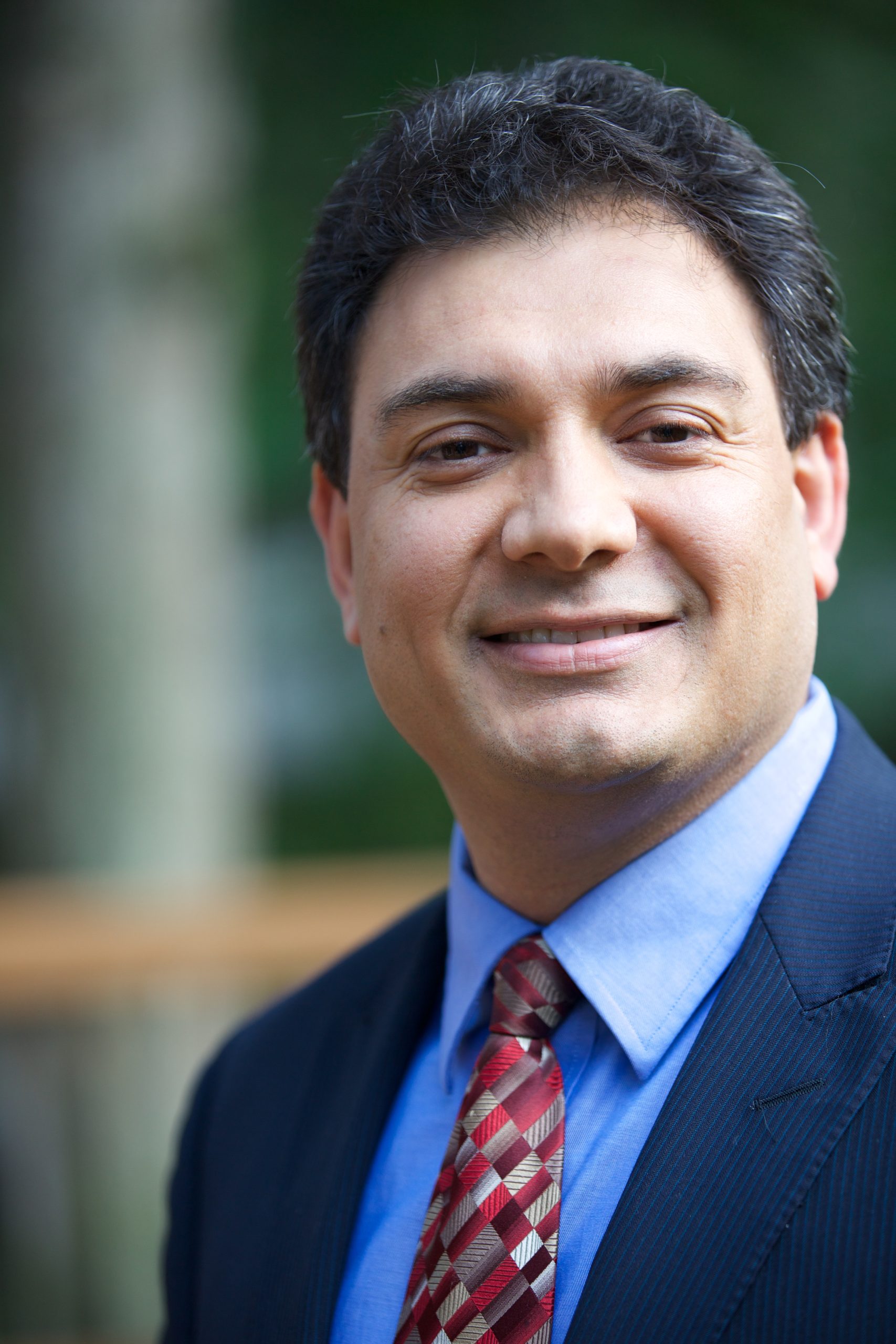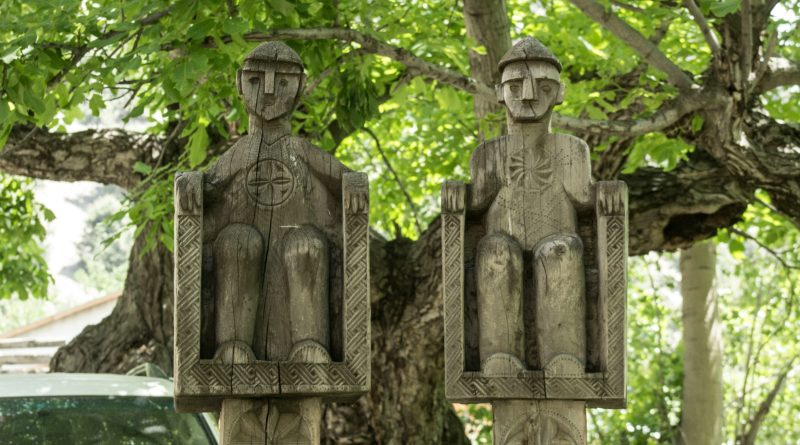Life in the Shadow of Invasions: The Kalashas Fight Extinction in Pakistan – Part I
By John T. Pinna and Senge H. Sering
The Kalashas have a distinct religious and linguistic identity that is rapidly fading. It’s no less than a miracle that the Kalashas have survived this far after centuries of Muslim attacks that should have wiped them out long ago. Their valleys are situated at the main invasion crossroads, exposing them to the ravages of Turko-Mongols, Persians, Afghans, and, more recently, the Pakistanis.
Despite the scourge of forced conversion, genocide, and displacement, the Kalasha are proud of their heritage. They are polytheistic, practicing ancient Hinduism mixed with pagan and animist traditions. They have managed to preserve their rituals, customs, and language, establishing themselves as living examples of a heritage that predates the spread of Western religions in South-Central Asia.
Their distinct identity in a predominantly Muslim Pakistan is reflected in their colorful attire and vibrant festivals commemorating seasons and harvests, during which they enjoy lavish feasts accompanied by religious songs and traditional dances. Athanasios Lerounis, representing a Greek non-profit organization called the Greek Teachers, believes that the Kalasha heritage incorporates elements from every ancient culture and tradition, making it a cherished asset of the entire world, not just Pakistan.
Linguistic evidence indicates that the Kalasha are indigenous to Nuristan and Chitral and closely related to the Indian Dardics of nearby Gilgit, Baltistan, Ladakh, and Kashmir. Some Kalasha, like the residents of Hunza, claim to be descended from Macedonian soldiers, which scientists and anthropologists generally dispute. In the article “The Fate of the Kalasha,” Joel Elliott mentions that Greek tourists have a particular fondness for Kalasha. They create documentaries about Kalasha culture and present their hosts with coins and perfume bottles featuring Alexander’s portrait. Some tourists also arranged for the Kalasha troupe to visit Greece and perform religious rituals.
The establishment of Afghanistan as a buffer between the Russians and the British, the partition of Indian lands, and the subsequent formation of Pakistan resulted in multiple divisions of Kalasha lands and people. In Pakistan, they are only found in the northernmost Chitral district, which borders Afghanistan to the north and west, Gilgit-Baltistan to the east, and Pakistan’s Dir district to the south.
Their valleys are frequently referred to as Kafiristan, or the Land of the Infidels, in contrast to Afghanistan’s Nuristan province (the Land of Celestial Light), which is populated by Kalashas who were forced to convert to Islam. According to author Zubair Torwali, Afghan king Emir Abdul Rahman’s violent Islamization campaign resulted in the invasion of Kalasha valleys in 1895, as well as widespread genocide, displacement, conversions, and the renaming of their lands as Nuristan. The establishment of the Durand Line came at a critical time to protect the remaining Kalasha, as a large number of Nuristani Kafirs fled to lands east of the Durand Line, escaping complete annihilation of their religion.
When it comes to suppressing Kalasha non-Muslims, the local Chitrali rulers, known as the Mehtars, are no different than the Afghans. According to Wynn Maggi, anthropologist and author of ‘Our Women Are Free,’ the Mehtars imposed heavy taxes and forced labor, and frequently sold Kalasha into slavery, causing widespread economic and cultural poverty. Following Mehtar’s dictates, the Chitralis continue to regard Kalasha as the lowest caste, and this social stigma has hampered their development.
Once found throughout Chitral, the Kalasha are now confined to three small valleys known as Bumborat (Mumuret), Rumbur (Rukmu), and Birir (Biriu). Urtusan valley previously had a sizable Kalasha presence, but the entire population has now converted to Islam. In his article “The Kalasha of Urtsun,” Alberto Cacopardo describes that a violent attack by the Muslim Bashgali tribe resulted in massive conversions in Urtusan. The Basghalis burned and plundered the village, killing anyone who refused to accept Islam. According to Maggi, the Kalasha conversion to Islam was barbaric, with those resisting being tortured and imprisoned. Furthermore, Kalasha men were forcibly circumcised while Kalasha women were kidnapped and forced to marry Muslims.
According to reports from the Asian Human Rights Commission, the Kalasha made up a plurality in Chitral prior to the eighteenth century. Cacopardo claims that mass conversion of the Kalasha began in the second half of the 18th century. Several sources claim that there were over 100,000 Kalasha in Chitral in the beginning of the 19th century.
By the 1950s, the Kalash population had dropped to under 10,000. Today, they number fewer than 4,000. Luke Rehmat, a local activist, claims that the most recent census shows that their population is continuing to decline. According to the Kalasha council’s survey, the Kalasha female population is declining faster than the male population, with 1,833 females versus 2,039 males. Locals estimate that 100 Kalashas, mostly girls, convert to Islam each year. Taleem Kalash, a local researcher, claims that approximately 7,775 Kalashas converted to Islam in recent decades.
There is no government data to support the conversion rate. According to Pakistan’s 2017 population census, Muslims are steadily increasing in Kalasha villages. The district data shows that Ayun Union Council, which includes 27 villages, has a total population of 28,182. The Kalasha live in 15 of those villages and account for only 1% of the population in just eight of them.
Gul Kalasha, an archeologist and curator at the Chitral Museum, says she has seen an increase in conversions in recent years, particularly in the Birir Valley. A 2015 report by the Swiss Agency for Development and Cooperation claimed that Birir has 6,242 inhabitants in 570 households, with Kalasha accounting for 26% of the total. However, data gathered by Kalasha locals in 2017 revealed that Birir’s Kalasha population was only 844, or about 14%.
Even though Pakistan signed the United Nations Declaration on the Rights of Indigenous Peoples; the governments refuse to recognize Kalasha’s legitimate indigenous status. In an interview with Shah Meer Baloch of The Diplomat, Luke Rehmat claims that Pakistan lacks a clear policy on the rights of indigenous communities and refuses to recognize his centuries-long existence and identity.
According to the Peter Tatchell Foundation’s website, Pakistani population census records do not legally recognize the Kalasha as an ethno-religious minority, but rather classify them as others, despite the community meeting the criteria for recognition. In Pakistani documents, they are often forced to declare themselves as Buddhist or Muslim. The USCIRF’s 2000 report finds it disturbing that Pakistan’s National Database and Registration Authority (NADRA) continues to deny the vulnerable Kalasha their rightful religious identity.
Although the Pakistani constitution mentions equal rights and freedoms for all religions, in practice, governments and non-governmental organizations actively contribute to the usurpation of Kalasha lands, as well as the conversion and displacement of vulnerable Kalasha members. Many reports indicate that the Pakistani government tolerates egregious violations of religious freedoms against the Kalasha.
The local authorities engage in discrimination and violence against the Kalasha, as well as interfere with and suppress festivals and traditional practices. In 2014, a three-judge Supreme Court bench led by Chief Justice Tasaduq Hussain Jillani declared that the indigenous Kalasha face violent consequences for refusing to convert. Peter Parkes’ 1999 occasional paper “Enclaved knowledge: Indigent and indignant representations of environmental management and development among the Kalasha of Pakistan” quotes local activist Saifullah Jan pleading that more than money, the Kalasha require legal protection for survival.
During an interview with the BBC in November 2023, local activist Muhammad Ali stated that while Muslim evangelists are theoretically prohibited from entering Kalasha neighborhoods, law enforcement turns a blind eye to incidents of forced conversions. Similarly, laws prohibit outsiders from acquiring land in Kalasha valleys, but the encroachment proceeds with no consequences for the offenders. Radio Free Europe reported in 2019 that despite restrictions, the construction of mosques in Kalasha areas continues. As of now, 18 mosques have been built throughout the valley, encouraging state-led demographic transformation and clash with the local culture. In one village, a Madrassah has been built adjacent to the Kalasha sacred ground.
The Pakistani authorities’ attitudes and tactics toward Kalasha are the same as those employed against Hindus in Sindh, Ahmadis and Christians in Punjab, and Shias in Parachinar, Quetta, and Gilgit-Baltistan. Evidence abounds that the authorities refrain from prosecuting Muslims who suppress the Kalasha and instead provide them with legal and administrative protection. I once met a Pakistani military colonel who had a month’s paid leave to travel to Chitral and convert the Kalashas.
The Kalasha do not have representation in district or provincial councils, nor in the national parliament. They also lack representation in the bureaucracy that develops local socioeconomic policies. In 2013, they boycotted the provincial and parliamentary elections to raise awareness about the government’s marginalization and persecution.
Feisal Hussain Naqvi’s 1996 occasional paper “People’s Rights or Victim’s Rights: Re-examining the Conceptualization of Indigenous Rights in International Law,” mentions that the prejudice against Kalasha is so deep that obtaining menial and unskilled jobs as peon, cleaner or gardener in government departments and schools is a surmountable task.
Studies show that higher education fosters pride in one’s heritage as well as the will to resist cultural deterioration. However, the lack of jobs and better opportunities forces Kalasha parents to send their children to Muslim schools where they face discrimination and victimization. Naqvi states that public school teachers and auxiliary staff constantly demean and degrade Kalasha values in front of students, and teachers frequently require Kalasha girls to wear Islamic hijab. Many Kalasha children have no other options but to attend Madrassahs.
Kalasha children are educated in a language that they consider irrelevant and inappropriate to their culture. Maggi writes about parents who complain that their children are being forced to learn the Quran and Islamic studies. According to Jan Heegård Petersen, a Kalasha language researcher, the majority of teachers are Kho and Pashtu speakers who struggle to communicate with local children. Furthermore, the provincial government has designated 12 languages to be taught in schools, but Kalashamon is not one of them. All school course materials are printed in Urdu and English, posing a challenge to the young Kalashamon speakers.
The situation has a negative impact on the Kalasha children’s academic progress as well as their emotional and psychological well-being. It also contributes to the overwhelming discrepancy in enrollment. According to Naqvi, in one of the local village schools, there were only 77 Kalasha students among 646 Muslims.
In 2019, Nicolas Bay, a French member of the European Parliament, stated that Pakistan may lose its Generalized Scheme of Preferences Plus (GSP+) status for failing to recognize and protect the Kalasha from forced conversion to Islam and attacks on ancestral lands. The multiple US-IRFA reports indicate that Pakistan refuses to provide equal protection to members of minority religious groups. The Pakistani government’s failure to prosecute religion-based abuses promotes an environment of impunity which has earned it the designation of a country of particular concern (CPC) by the US State Department.
The history and ongoing persecution of the Kalasha people is deeply troubling. The Kalasha, who have been persecuted by Muslims for centuries and are being squeezed by the forces of assimilation and modernity, live in a shrinking space in contemporary Pakistan. They face a variety of forms of persecution, all stemming from Pakistan’s policy of projecting national insecurities onto ancient identities and pre-Islamic heritage.
A country’s human rights record is frequently judged by how it treats its most vulnerable citizens, and the treatment of the Kalasha is a litmus test for Pakistan’s commitment to pluralism and religious tolerance.
Pakistan must create a conducive climate for religious minorities, and in the case of the Kalasha, with such a small population; the government should give special consideration to a complete ban on conversion. The critical situation highlights the need for a coordinated effort by both national and international forces to protect their fundamental rights and existence.
John T. Pinna is the Founder and Executive Director of Muslims for Muslims International.

Senge Sering is the President of Gilgit Baltistan Institute in Washington D.C.

